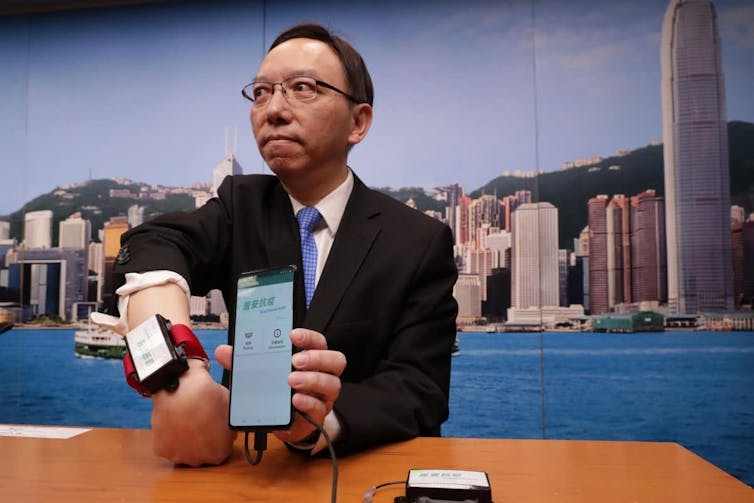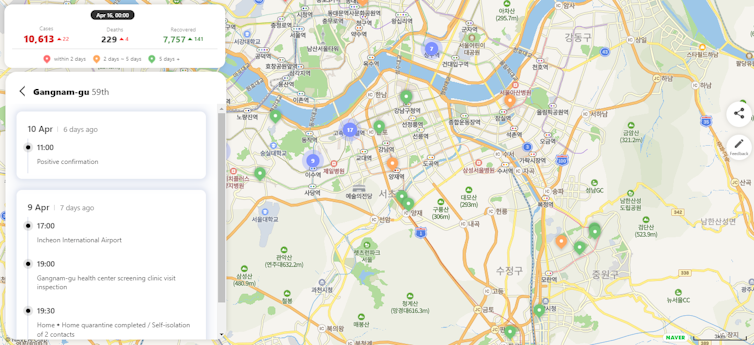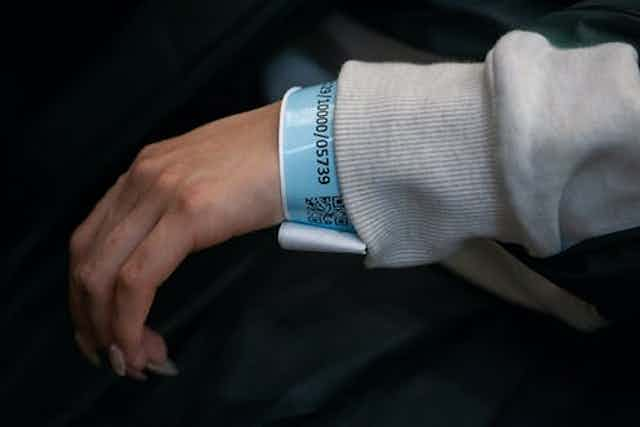Almost 1,5 month since Indonesian President Joko Widodo’s call for the public to adhere to social distancing, avoid crowds and self-isolate at home, there remains no sign of COVID-19 transmission reducing. This country has around a quarter billion population, the fourth-most-populous in the world, with a weak health system and high mobility.
On the contrary, the past week has shown 200-400 new cases reported daily, reaching over 11.000 cases on May 5. This makes Indonesia’s case doubling to be eight days and represents an increase compared to the daily increase of 100-200 cases daily in the last week of March dan the first week of April.
Whereas the success or failure of the recent large scale social distancing regulation by the Jakarta Provincial government which commenced April 10 and followed by the capital’s satellite cities on April 15 will be seen in the coming month.
Failing will mean that hospitals in the transmission epicentre could be overwhelmed next month when the tsunami of new COVID cases reaches over 50,000 patients, according to a researcher here..
Even though there has been none of the 203 countries affected by COVID that has successfully fully controlled its transmission, we can learn from China, Hong Kong, Taiwan, Singapore, and South Korea, countries which has been relatively able to hold the accelerating rise in number of cases.
Local quarantines (lockdowns) like in Wuhan China although shown to inhibit COVID’s transmission, is followed by other consequences including logistical issues of essential supplies for residents and mental stress, hence in the Indonesian context and many low-middle income countries, lockdown can’t be the only option to stop transmission. However, improving the public’s understanding and adherence to recommendations is the key to controlling this pandemic.
The government’s focus at all levels should be to improve public’s understanding to support isolation, physical distancing and support contact tracing in addition to preparing medications and isolation wards for these patients.
Below are six effective “wartime” strategies to flatten COVID with the help of technology to prevent hospitals and health care workers from being overwhelmed with the number of patients. Governments and the public must work hand-in-hand and in parallel to implement them to create the required beneficial impact.
1. Retrospective Isolation
The public must understand that the lack of effective treatment and vaccines against COVID meant that the key to defeating it is to stop its transmission and strengthen personal immune responses through self-isolation.
Calling for self-isolation by the public is not enough. The government must create policies for its enforcement, including penalties for violators.
Indonesia can adopt the policy of retrospective isolation for 14 days since one’s return from overseas with strong enforcement and fines for violators. This policy can help reduce the number of imported cases in Indonesia.
Singapore enforces this policy, for instance, with the help of technology such as GPS tracking and video calls. Officers also routinely perform random checks to ensure those returning from overseas truly self-isolate. Fines up to 10.000 Singapore dollars (about IDR110 million) and passport cancellations await violators.
This policy has not been present in the current Indonesian Immigration regulation. The current regulation commencing March 31, 2020, only bars entry for foreign nationals with an appeal for Indonesians returning from overseas to self-isolate for 14 days. No policy to actively enforce this self-isolation is present with technology or manually.
To date, temperature screening for overseas passengers in airport remains the primary preventive modality.
Indonesia can utilise the over 15 thousand medical student volunteers as well as village chiefs, army personnel, and community leaders to support monitoring self-isolation practices. The government can also aid in providing low-cost locations for the 14 days in self-isolation. For example, utilising the current Hajj hotels and government estates to help support self-isolation in those returning from overseas.
Technically, the government can provide GPS trackers linked to local health offices to confirmed patients who must self isolate similar to the policy in Hong Kong.

2. Isolating areas of high transmission (“red zones”)
Similar to COVID cases in China which are concentrated in Hubei Province, in Indonesia most cases remain concentrated in several pockets in Java island with Jakarta as its epicentre.
In this context, the government should consider self-isolation for at least one week (COVID symptoms generally appear within five days of contact) for those moving from areas of high local transmission like Jakarta to low transmission like Aceh.
Currently, widespread social distancing has been implemented in Jakarta and its satellite cities. Still, domestic flights from areas of high local transmission like Soekarno Hatta Aiport Jakarta and Juanda Airport Surabaya remains operational.
These passengers carry a high risk of transmitting COVID to areas with a low number of cases. With this in mind, domestic flights will need to be closed similar to international flights to prevent COVID from spreading to other provinces, especially those with weaker health systems to Jakarta.
3. Reducing transmission risk with technology
For many people who live paycheck to paycheck like taxi drivers, roadside sellers and similar jobs, going out to work is a necessity.
In this regard, the call to maintain physical distancing must be intensified.
We can learn from South Korea and China on the use of mobile apps to map high-risk areas on one’s daily routes. In Indonesia, a similar detailed dashboard is not yet present.

A barrier to such an application in Indonesia is the lack of open public and centralised data on the locations of red zones.
Several regions like West Java and North Sumatra has started initiatives to form such dashboards or openly announce the locations of red zones. This open data and transparency on COVID and red zones is important and relates to important and relates to President Jokowi’s call for openness.

4. Contact tracing with big data
A model on COVID’s natural history by the Centre for the Mathematical Modelling of Infectious Diseases UK showed that if contact tracing can identify at least 70% of contacts with confirmed COVID patients, COVID can be brought under control.
Currently, field data from Indonesia reports that the majority of contact tracing remains manual and is dependent on the patient’s memory.
The use of information technologies for contact tracing like real-time location tracking as found in Singapore’s TraceTogether app or utilising cellular network locations as seen in Taiwan need to be massively implemented.
Recently, the Ministry of Communication and Informatics has released an App similar to TraceTogether called PeduliLindungi. We need to support its development despite currently being far from perfect and requires additional features such as transparent mapping of red zones.
Outside this app, it is crucial to promote the importance of writing down the list of people we have been in contact with the last 14 days in a book or phone to aid in contact tracing if they become COVID positive.
5. Universal masking in public
Educating the public on the importance of universal masking in public is important. Amid current shortages in personal protective equipment (PPE) including medical masks which has lead to at least 26 doctors and nine nurses deaths as of April 10, it is advisable to recommend non-medical masks for the public.
Non-medical masks are masks made of cloth such as water-resisting cotton that can be reusable.
After every use the mask must be routinely washed with soap and dried correctly. In doing so, care must be taken not to hold the outer side and to wash hands directly after removing it.
A laboratory study in China has shown that non-medical masks such as this can still provide significant reduction in droplet transmission from those with lung disease like COVID. This study utilises Avian Influenza as a surrogate for COVID and reports that 95.15% of viral particles can be blocked by masks made from one layer of cloth and four layers of tissue paper.

6. Educating the public through short messages (SMS)
None of the above policies can be successfully implemented public support. The public should understand the reasons for government advice on physical distancing.
Furthermore, a multitude of information is circulating in social media and WhatsApp groups on drugs and herbal regimens which are reported to cure COVID in addition to other hoaxes. These inaccuracies must be regularly and quickly corrected through press conferences by experts in infectious disease and internal medicine, for example from the Indonesian Society of Pulmonology and Indonesian Society of Internal Medicine.
Majority of Indonesians (over 130 million) owns a mobile phone hence a quick solution to improve education is through SMS as conducted by the National Disaster Management Agency (BNPB) since last week. However, the current frequency of 2 to 3 times per week is not enough.
A meta-analysis (review of similar studies) of 38 studies, with a total of 19 thousand participants with varying diseases showed the need of more than one SMS each day to support behavioural change
With this in mind, BNPB can consider sending SMS more frequently, for example twice daily in the morning and evening on the importance of staying at home, frequent hand washing, and physical distancing with clear, simple wordings. The media and influencers must also share similar messages to the public.


